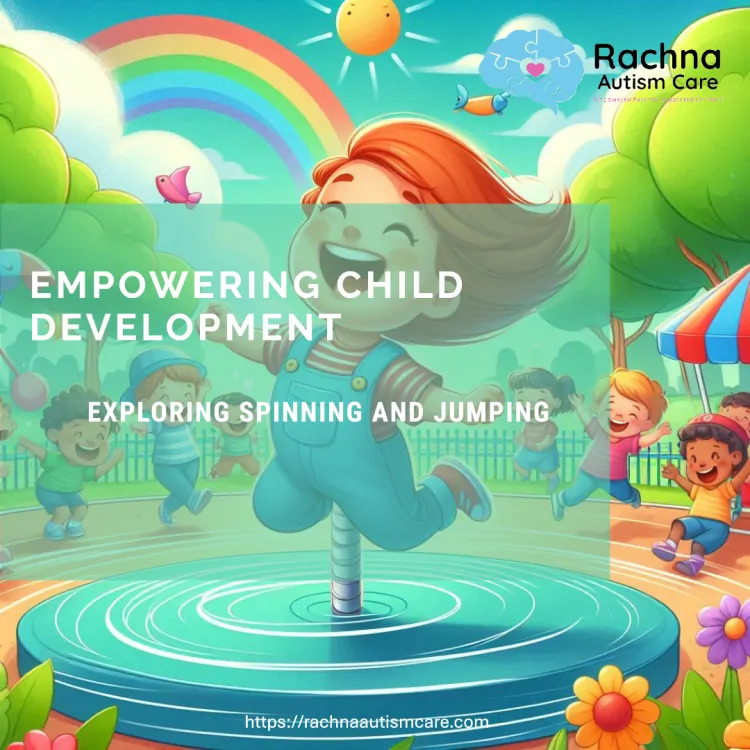The Role of Spinning and Jumping in Autism Spectrum Disorders
We post looks into the significance of the relationship between autism and spinning objects and the reasons behind autistic jumping.
The Role of Spinning and Jumping in Autism Spectrum Disorders
In the quest to understand the behaviors of patients diagnosed with the autism spectrum, some actions immediately stand out: objects spun repeatedly or bounced up and down. These strange behaviors are sometimes called "stimming." They can be puzzling -sometimes even of concern to those who are not familiar with autism. However, in the majority of autistic individuals, spinning and jumping are forms of self-regulation, sensory exploration, or even communication. This post looks into the significance of the relationship between autism and spinning objects and the reasons behind autistic jumping.
Understanding Stimming in Autism
Self-stimulatory behavior, also known as stimming, is common in autism spectrum disorder. A person with autism uses repetitive physical movements or sounds to cope with his/her sensory experiences. Some of the most classic examples include hand-flapping, rocking, or humming. Two specific types of stimming behaviors observed across the entire autism spectrum in both adults and children and each range of abilities are spinning objects and jumping.
These behaviors are not random acts; they serve a purpose for an individual. For many, stimming is relaxing anxiety or feeling overwhelmed, providing a good sensory experience, or just sheer excitement and happiness. Let's dive a little deeper into why spinning objects and jumping are such popular things and what that says about autistics.
The Obsession with Spinning Things
Spinning is associated with autism because most children on the spectrum have a preference for activities that feature spin. This could be spinning tops and wheels, twirling strings, or even watching fans or washing machines spin. The attraction to spinning objects is due to the predictability of the motion or the smooth flow that is very comforting or just stimulating.
For some sp-children, objects spinning makes them feel more anchored by activating their senses. The movement would be visual stimulation that is soothing for some and may stimulate others, depending on their needs. For instance, an individual who requires stimulation visually may feel comforted in the case of a spinning fan as this provides a consistent and repetitive pattern that feels satisfying.
In some instances, it can also be viewed as sensory exploration, as spinning things sometimes serves the purpose. In cases where individuals with autism have a different sensory processing system, they may be attracted to something that other people might not care about. The rhythmic rotation and optical effects of spinning can allow one to view the world another way, but it gives good sensory feedback.
Why Do People With Autism Jump?
Another type of stimming slightly reminiscent of spinning is autistic jumping. Like spinning, autistic jumping can be used for various purposes, including releasing pent-up energy, expressing joy or excitement, and even self-regulating sensory experiences. For many people, the bodily sensation of jumping — the feeling of weightlessness followed by the impact of landing — can be highly rewarding.
Perhaps autistic persons also meet some of their sensory needs associated with their proprioceptive system by jumping. The proprioceptive system helps us understand where we are in space. For some people with autism, this sense is either under- or over-responsive and they will engage in activities such as jumping for the necessary input. Landing on their joints and muscles can be comforting.
Actually, it would be helpful to the parents or caregivers to know that autistic jumping is usually done intentionally and can be used as a mechanism for meeting a sensory or emotional need. The individual would do well not to try and discourage the jumping outright but instead, find out why this has to be done and then offer alternative, safe ways of getting to where the need was, if it must be achieved.
Supporting an Autistic Spinning or Jumping Child
Although spinning objects and autistic jumping can be positive self-regulatory behaviors, sometimes they become unbearable or even unsafe; hence, caregivers and educators must strike a good balance that will enable the person to stim healthily and safely.An autistic child who spins things around can be provided with the right toys that would entertain them, like a fidget spinner or sensory ball, and avoid mischievous things that go about damaging other household properties.
If jumping is the preferred activity, then safety space for the same would also be provided. The use of a trampoline, soft mats, or a jumped designated area can meet the sensory needs in a controlled environment. It is also essential to understand what could trigger the need to jump — whether it's overstimulation, excitement, or a need for proprioceptive input — so you can respond accordingly.
Conclusion
Although the behaviors of autism and spinning objects and autistic jumping may seem odd or even disturbing to some, often they present crucial coping mechanisms for people on the autism spectrum. It is in the best interest of the autistic individual if the role these behaviors play is recognized and understood.
For caregivers, it is crucial to consider such behaviors with sympathy and inquisitiveness. They are not odd or distracting but handy tools that assist autistics to survive in a hostile world. It makes a whole lot of difference in the lives of those who are autistic if one can provide them with proper avenues and accommodations for these behaviors.
Embracing such behaviors as part of the diverse ways people experience the world may help move toward greater understanding, acceptance, and support of those with autism.
What's Your Reaction?


















